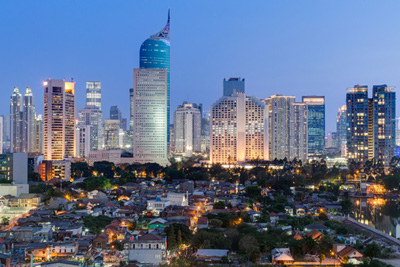CPhI South East Asia opens as Indonesia encourages foreign investment
Posted: 7 March 2016 | | No comments yet
CPhI South East Asia, organised by UBM EMEA, will take place at the Jakarta International Expo, Indonesia, from 6th-8th April 2016…


CPhI South East Asia, organised by UBM EMEA, will take place at the Jakarta International Expo, Indonesia, from 6th-8th April 2016.


The event, now in its fifth edition, co-locates with P-MEC, InnoPack, as well as the new additions Hi (Health Ingredients) and ICSE South East Asia.
The Indonesian pharma market, as the hub in South East Asia, is attracting increasing numbers of international pharma manufacturers and suppliers due to its heavy reliance on imports and favourable conditions for foreign direct investment. Indonesia is a unique location for CPhI, as it offers a first-hand window into the on-going harmonisation across the ASEAN region, which is expected to accelerate growth and foreign investment in the region.
In fact, Indonesia has eased its investment rules and now allows foreign ownership of up to 85% in the pharmaceutical sector. Furthermore, the country is currently importing over 90% of the pharmaceutical ingredients it consumes, and the total value of imports during the first half of 2015, saw a staggering rise of 17% to $296 million.
With these conducive economic conditions as its foundation, CPhI South East Asia will bring buyers and sellers together, providing a sourcing channel for pharma manufacturers, and establishing new business contacts for suppliers. The event was introduced to the country only 4-years ago in 2012 and has expanded rapidly thanks to the vibrant ASEAN market, with over 5500 attendees and 260 exhibitors expected in 2016.
One of CPhI South East Asia’s primary growth drivers has been its ability to offer attendees and exhibitors direct access to a region with strong government support for pharmaceutical production, a large population of prospective customers and a growing economy. Moreover, Governments across the ASEAN region are introducing universal healthcare programmes, with the consequential rising demand for all categories of medicines, especially generic drugs. For example, since launching its mandatory healthcare coverage programme (JKN) in 2014, Indonesia’s government healthcare spending has increased by 4%, and is forecast to reach USD 7.8 billion in 2016.
Some highlights of CPhI South East Asia include:
- Innovation Gallery: Showcasing the most innovative and revolutionary products within the pharma market, the gallery is situated in the middle of the event for easy access and visibility
- Business Matchmaking Programme: Complimentary service for all attendees to pre-arrange meetings with buyers and suppliers. It helps visitors and exhibitors find the companies that best match their business needs
- P-MEC Route: a dedicated daily tour guide for attendees to have a one-to-one presentation of exhibitors’ latest developments in pharmaceutical machinery and technology
In 2016, the event is also co-located with ICSE South East Asia, providing a central hub for outsourcing solution providers in the region – covering contract and development services through to toll manufacturing of commercial scale pharmaceutical products. The other new co-located event this year is Health ingredients (Hi) South East Asia. This is a hugely exciting new addition and provides access to health, functional and natural ingredients that are used in pharmaceutical, health product, food and cosmetic sectors.
Michael Chon, Business Manager at Lam Seng Hang Co PL, commented: “CPhI South East Asia is the best place to get first-hand information on all the regional and international pharmaceutical players. But beyond the exhibition itself, it is a very useful avenue to examine the latest trends. We are very excited to take part in the 2016 event and look forward to the new business relations and opportunities it will bring.”
Chris Kilbee, Group Director Pharma at UBM EMEA, added: “Increasingly international companies are looking to the expanding economies of South East Asia and we have seen this event grow very quickly in just the last 4-years. With a conducive FDI environment, an expanding appetite for generics and a large number of imported drugs this is now one of the most exciting regions globally for pharma and CPhI. The event provides the only regional platform for new business across the pharmaceutical supply chain and the companies here will build core relationships that will drive this region’s future growth.”




